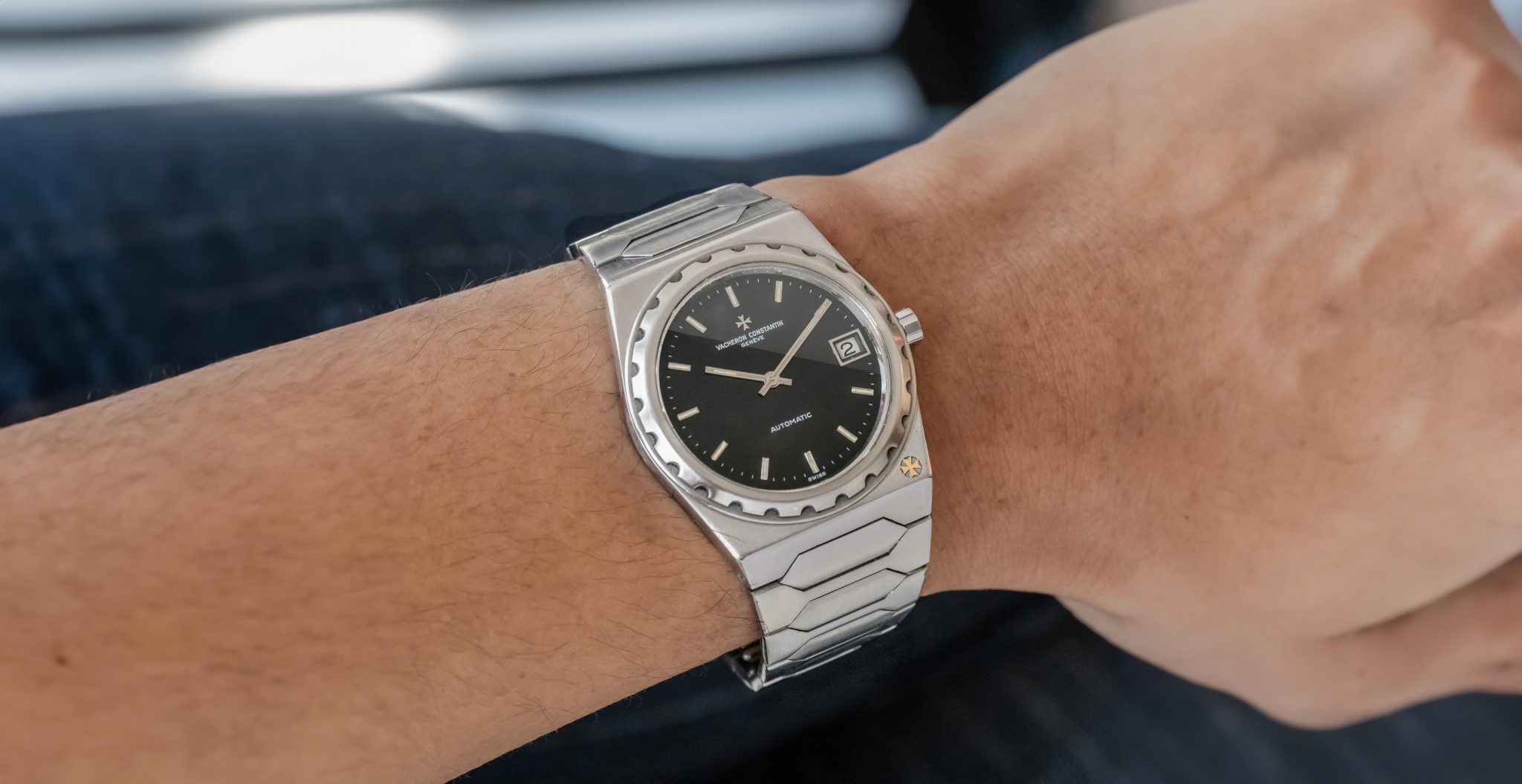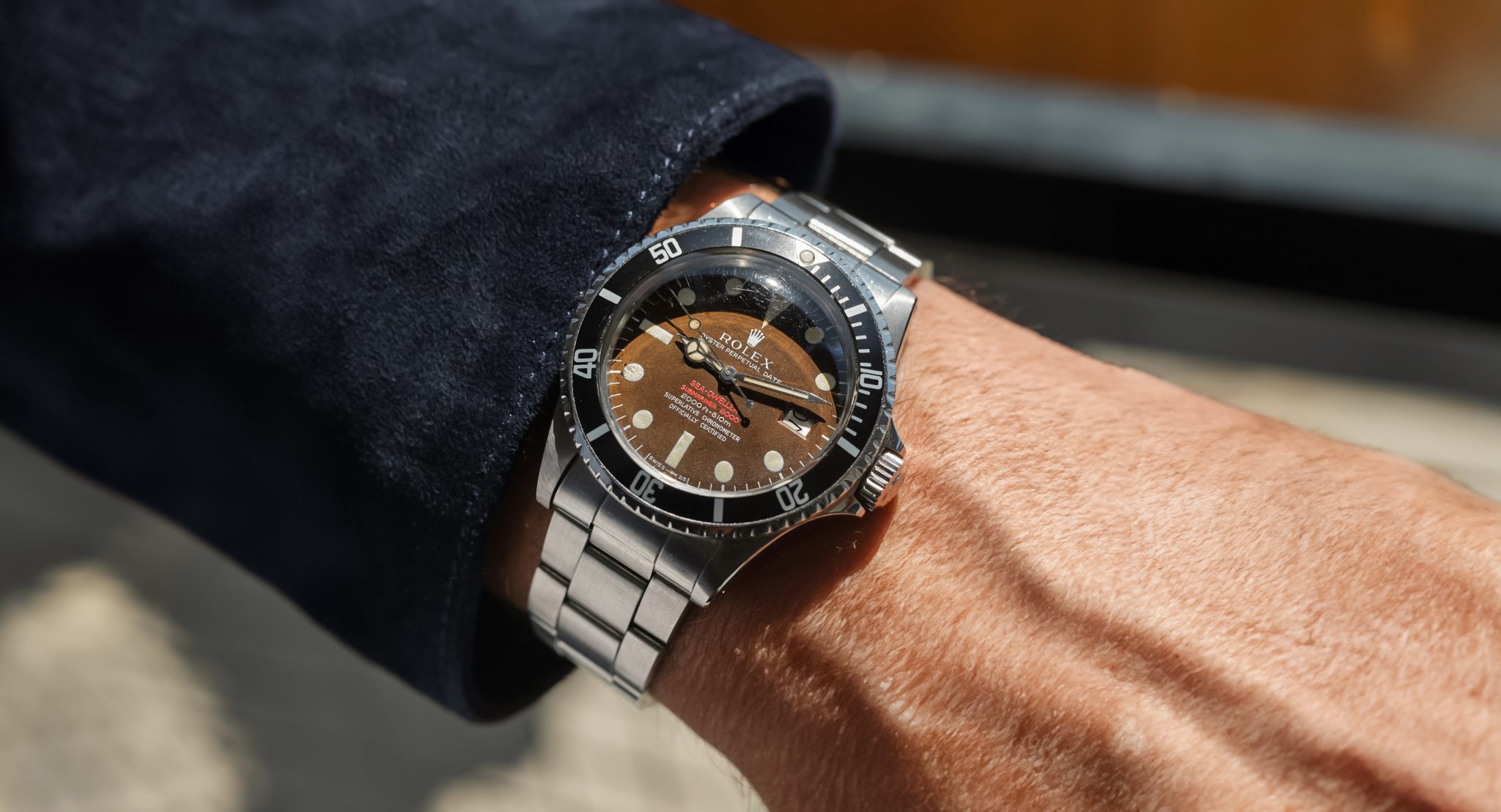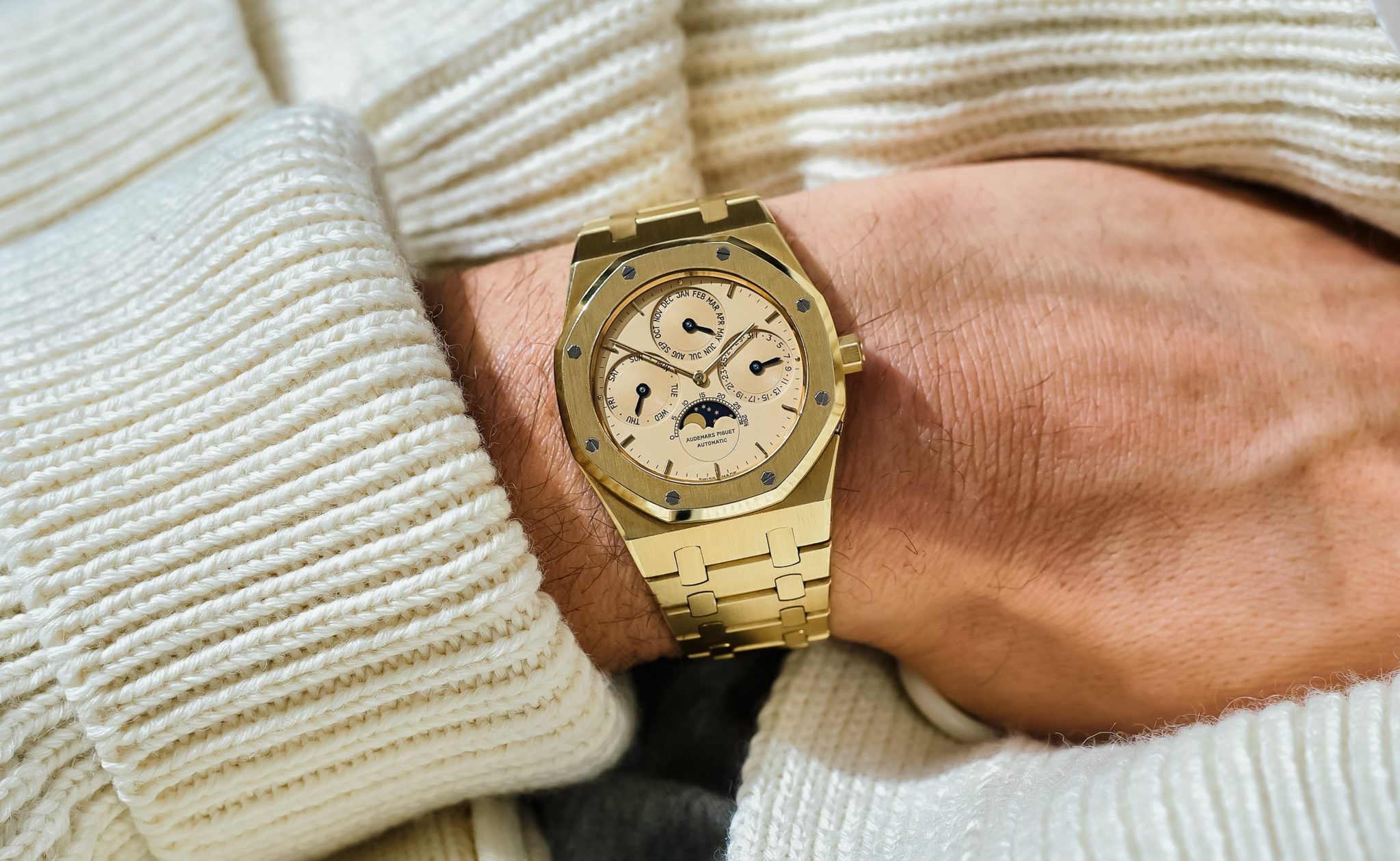
25654BA Audemars Piguet Royal Oak QP
While the Royal Oak was intended to be a time-only sports watch, its abilities quickly diversified after the 5402 with a range of metals and complications. The most iconic of these is easily the Quantieme Perpetual (or perpetual calendar to us peasants). It is a beautifully contrasted blend of sporting pretense and haute watchmaking that, before the ref. 25554, hadn’t really been on offer to the world before. This was the Richard Mille of the 80s, just with more substance. It’s a ref. 25654BA, produced in just 422 examples from 1982 to 1993, and it’s one of the earliest examples of complicated watchmaking shaking hands with sporting pedigree.

This ref. 25654 is one of a special set of Royal Oaks, under 1600 examples of Royal Oak QP made before leap year indication and, in essence, the OG. Post quartz crisis, AP had two successful watches in the market. The first was the 5548 (and its descendants), the perpetual calendar developed in secret which was the sole watch that brought fine mechanical watchmaking back to supremacy. The second, Genta’s masterpiece: the 5402. In a demonstration of utter bravery, AP squeezed the 5548’s incredible ultra-thin perpetual calendar movement into a Royal Oak case. The development was no small expense. It sold for outrageous money at the time, even marketed as ‘The most expensive steel watch in the world’. The price was about fourteen times what a steel Submariner went for back then, 45000 USD. And despite the case-side pushers, it still has water resistance (which was not easy to engineer, there are articles on that detail alone). Nothing about this watch was easy to create, that’s how it should be.
Gold-on-gold is always desirable, but it’s not one of the rarer 25654 configurations and so is usually the least expensive way into the reference. At Christies in 2015, one sold for 29K USD, which still haunts me. That was the low, and by 2019 these were regularly hammering between 125K and 150K. Today, things have cooled but only just. If any watch can be said to be objectively worth 100K, this might be it. It’s beautiful, significant, ahead of its time, objectively rare, all the words. That it sells for no more than its modern equivalent seems a disrespect to me. Even in the very high-end side of things, neo-vintage really is where the party is happening today.

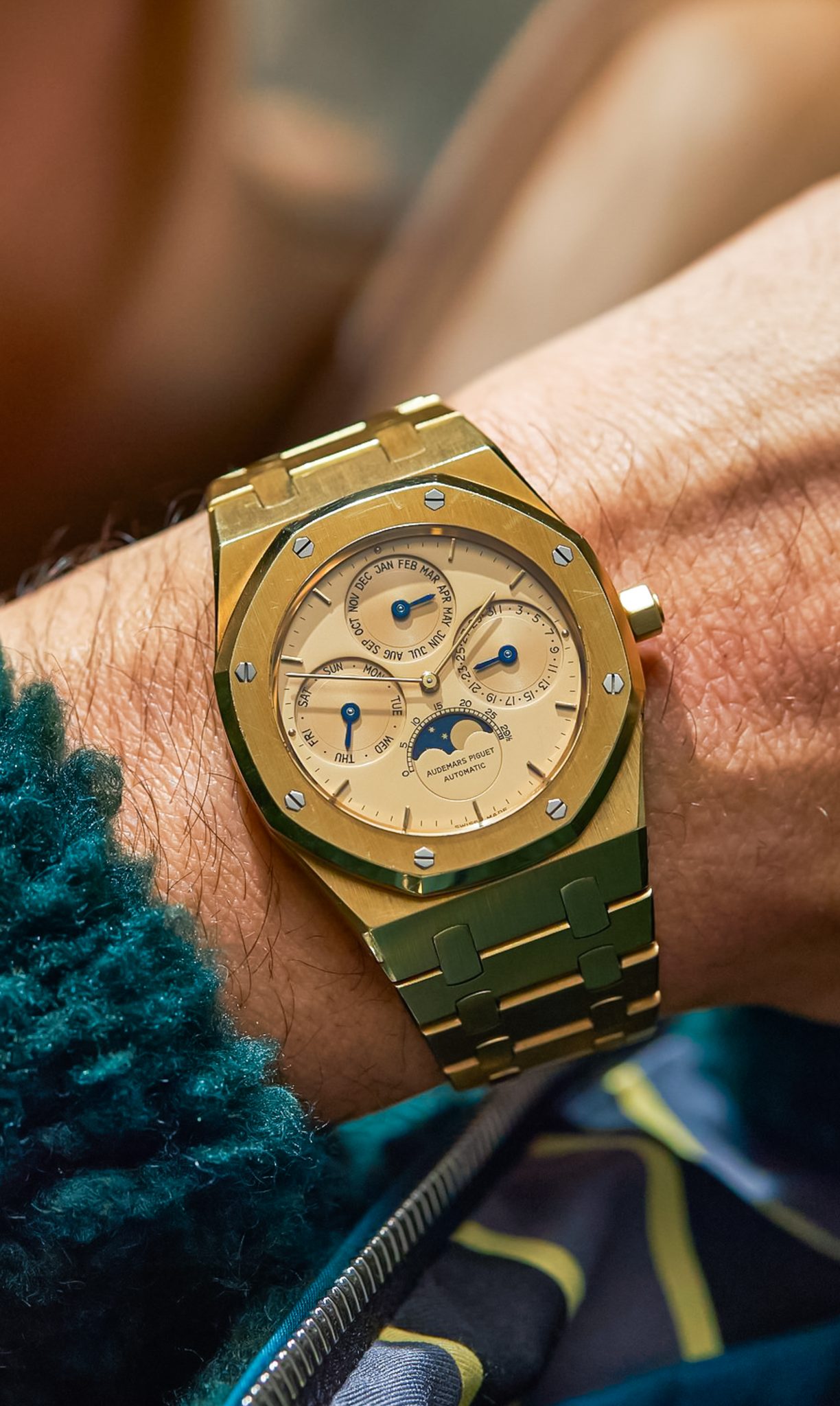
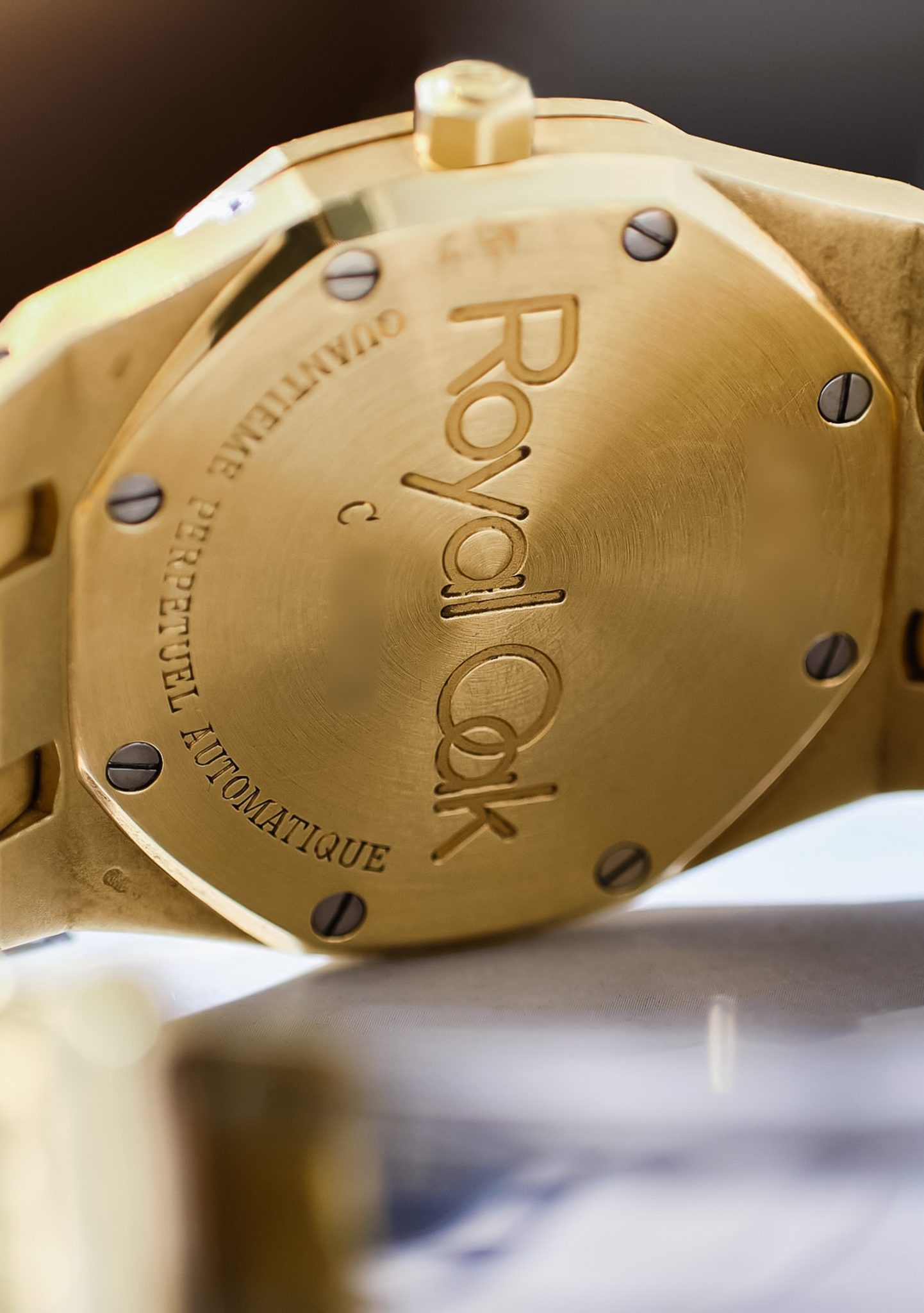
This example has a sharp case, with light surface wear as far as I can see. The dial has its flat ‘block’ font AP signature, so not a service replacement. The caseback engravings look deep which is always nice to see. It comes from a well-regarded London retailer with Extract.







